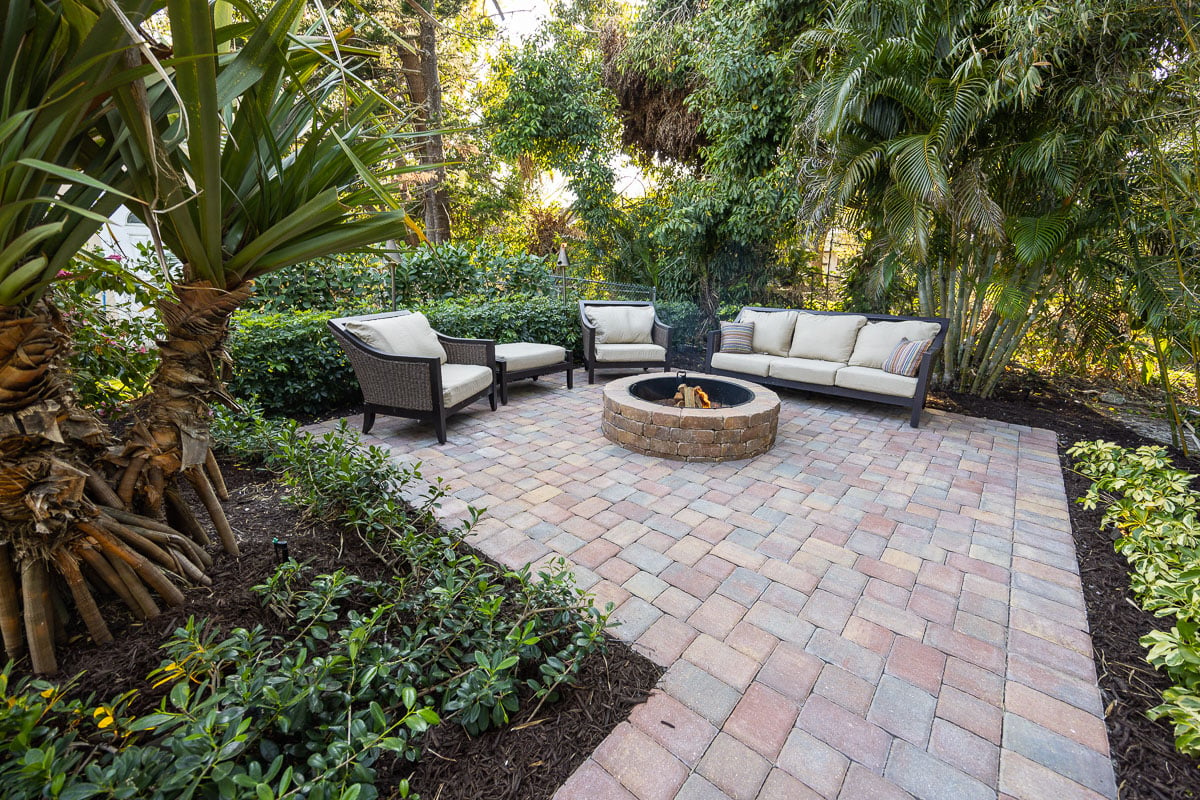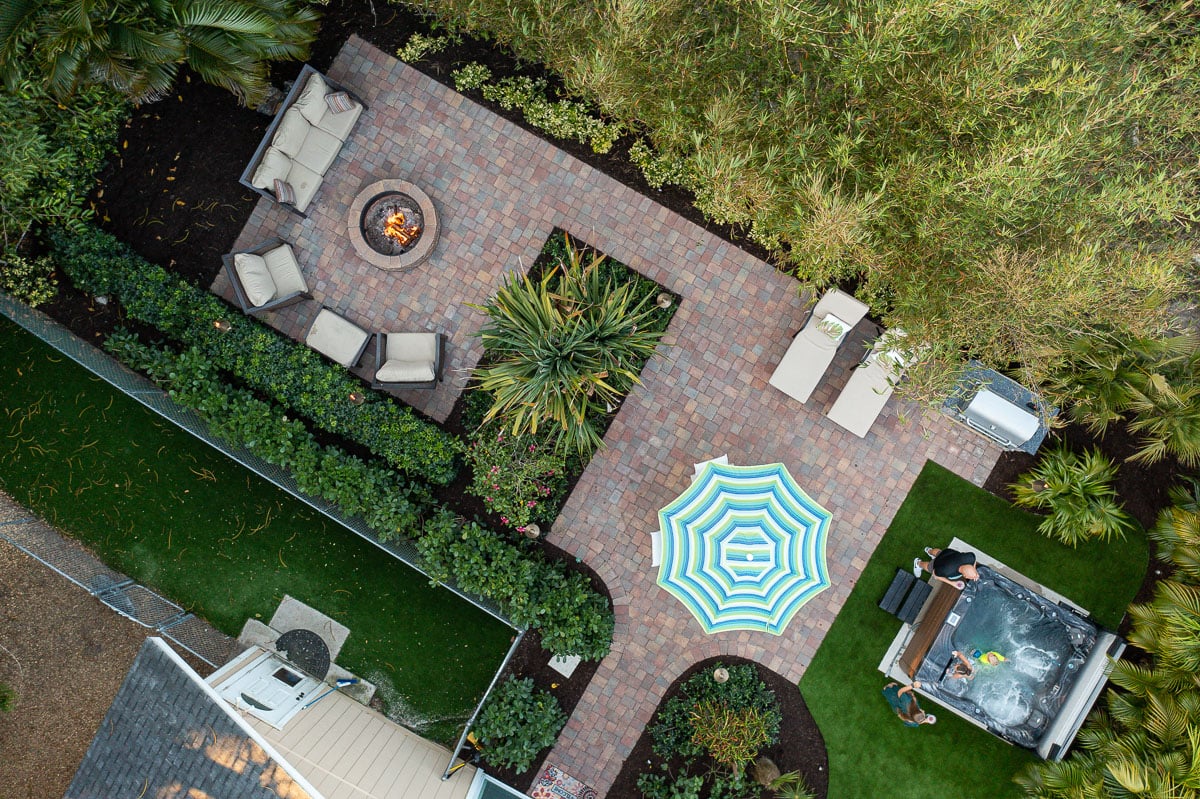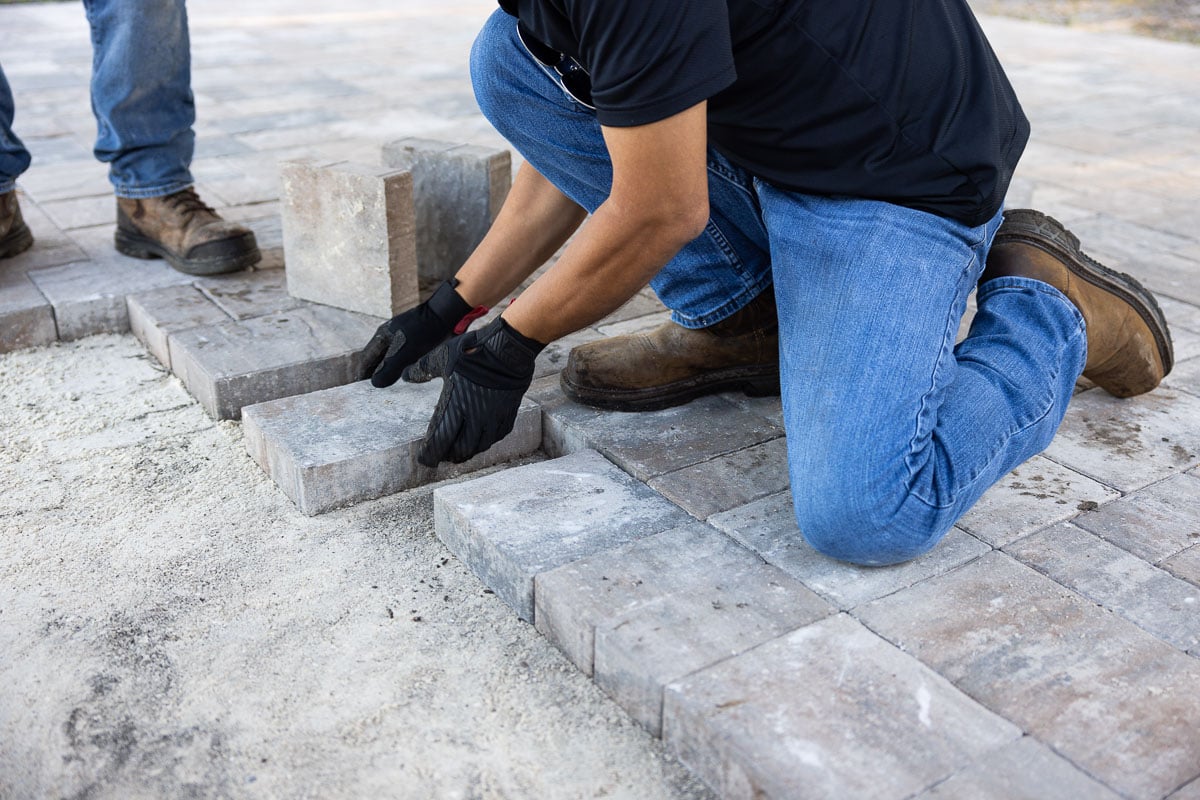
Low-Maintenance Patio Materials Perfect for Sarasota Homeowners
Nobody ever says, “I can’t wait to have a new patio so I can repair cracks in it and scrub stains out of it after my kids spill their grape juice.”
You want an easy-care, stress-free patio so you can relax out there, entertain your friends and get maybe even a short break from juice-spilling kids.
That means durable patio materials that stand up to life’s wear and tear. And here in Sarasota, life is tough on patios, with beating hot sun, torrential rain, and year-round use.
What are the best patio materials for Florida? Concrete pavers and travertine are your two best bets, offering the beauty you crave with low maintenance.
Let’s learn more about Florida-friendly patio ideas, including:
Choose Durable Patio Materials for Less Stress, More Fun
Concrete Pavers Top Low-Maintenance Patio Materials
Florida-Friendly Patio Ideas Part 2: Travertine
Even the Best Patio Materials for Florida Need Some Protection
Choose Durable Patio Materials for Less Stress, More Fun
A patio is your go-to spot, an outdoor haven that sets the scene for family gatherings, fun with friends, cool couple time and slivers of precious alone time for you and that Snickers bar you’ve been saving.
You want it to be a worry-free surface that stands up to everything from Florida’s crazy weather changes to big family gatherings to the occasional oops moment when somebody spills a glass of wine or drops a plate of ravioli.
Only low-maintenance patio materials need apply.
Here at Tropical Gardens, our discerning customers tend to be split between two top patio installation choices: concrete pavers or travertine. Here’s a closer look at these heavy hitters:

Concrete Pavers Top Low-Maintenance Patio Materials
Concrete pavers are a classic choice, and among the best patio materials for Florida. They’re sturdy, readily available and you can’t beat the color, texture and style choices.
Concrete pavers are patio design chameleons — they come in a host of styles that mimic other materials. Maybe you want a sleek slate look to complement your home’s contemporary architecture. You got it. Craving an old English cottage look for your vintage home? Quaint cobblestones, coming right up. Only — surprise! — they’re actually sturdy concrete pavers.
You can really tap into your inner artist with concrete pavers, too, and mix things up with innovative combinations of textures and contrasting borders or pavers that look like handmade paper. (It’s ok to say, “Yikes, how should I know which ones to choose?” Here’s where a skilled patio designer is a huge help planning your patio installation, because the types of pavers you can choose from is pretty overwhelming.)
Meanwhile, your artistic impressive paver patio is sturdy as heck.
Unlike solid slabs of concrete, pavers flex and move as they shift, so they don’t typically crack.
Even if pesky tree roots grow underneath and start to push your patio pavers up, you can pick them up, remove the offending tree roots, and replace them.
If a paver gets chipped or damaged, it can be easily replaced, too, no biggie. Save a few from your original installation.

Florida-Friendly Patio Ideas Part 2: Travertine
Travertine is a form of limestone formed by mineral deposits in hot springs. That’s automatically cool, right?
The pretty stone is Florida famous for its earthy beauty, textured surface and its high spot on the list of durable patio materials.
Travertine is porous, which means it naturally absorbs water, making its surface cooler to the touch than other patio materials. That’s a nice plus here in the hot Sarasota sun. It also makes travertine a popular choice for poolside patios, along with its textured slip resistance, for barefoot comfort on hot days.
Its natural color resists fading, too. It’s a winner when it comes to Florida-friendly patio ideas.
Travertine is great for contemporary homes. Its elegant, sleek look goes great with modern lines.
Because travertine is natural stone, it has to be obtained from quarries, making it a pricier patio installation choice than concrete pavers.

Even Durable Patio Materials Need Sealer
Sealer is the important top layer of your patio, whether it’s made of concrete pavers or travertine natural stone.
If you have a paver patio, sealer locks in the sand between each paver for a tight fit, keeping your pavers in place.
But sealer is key for low-maintenance, too. Here’s how it gets right to work after your patio installation:
- Sealer helps prevent your great paver colors from fading. Without sealer, the Sarasota sun’s harsh rays will fade your patio pavers.
- Sealer helps keep pesky weeds from sprouting in the sand between your pavers. Why spend precious patio time yanking weeds when you could be sipping margaritas?
- It can rain crazy hard around here. Sealer helps prevent that pounding rain from weathering the surface of your patio.
- Sealer deters annoying ants from building mounds in those spaces between pavers. (Deterring annoying aunts is your problem.)
- Sealer repels stains from ruining your precious patio.
Plan to seal your travertine, too, after patio installation, to protect it from stains, moisture, and wear and tear. Travertine is porous, remember, so it can absorb liquid spills without a protective coat of sealer.

When to Seal After Patio Installation?
A travertine patio can be sealed right away, no
problem. But you’ll need to wait a bit before sealing your paver patio, thanks to a cool sciencey thing called efflorescence.
Efflorescence is a whitish haze that appears on the surface of concrete pavers within a few weeks or months of patio installation.
No need to worry — it’s a normal and natural occurrence that happens when water-soluble salts in the concrete migrate to the surface of the pavers, creating the white haze.
But you don’t want to seal in this cloudy haze, which is why paver manufacturers suggest waiting a year to give it time to naturally fade away. We typically tell customers to wait six months before sealing, as the pavers are usually a few months old before they make it to your patio.
Also, even when you use durable patio materials like concrete pavers or travertine, sealer isn’t a one-time thing. You’ll need to reapply sealer every couple years.

Love Weeding? No? Then Consider this Patio Installation Upgrade
Remember that sand we talked about earlier that nestles down in between each paver to hold them in place?
It’s usually a fine, dry sand, sometimes called “sweeping sand,” and it does the trick just fine. But as regular dirt blows in over time and settles between those pavers, it makes a great home for weeds to move in. Ugly weeds sprouting between your pretty pavers isn’t the low-maintenance look you were going for, right?
Consider a higher-end, weed-deterring option called polymeric sand. It’s an upgrade that costs more, but it helps deter weeds.
Unlike regular sand, it’s bound with polymers that cause it to harden after it’s swept into the joints and sprayed with water. That makes it tougher for weeds to take root.
That means easier maintenance for you. Less weeding, more fun.

Ready for Florida-Friendly Patio Ideas? Talk to Us
Choose durable patio materials now, enjoy more care-free patio lounging later.
We’re happy to help, with patio design and installation services in Sarasota that makes this whole patio process super easy,
Trust your Florida patio — and the rest of your Sarasota landscape design — to us.
Let’s get started. We’ll help you figure it all out.
Give us a call or fill out our form today! Our team of Sarasota landscape experts can’t wait to help you choose materials, create stunning designs and talk about fun stuff like types of sand so you can breathe easier about your landscaping.




